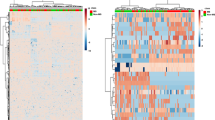Summary
The lipid composition of CSF, serum and lymphocytes from patients without demyelinating disease (controls) as well as from patients with acute and chronic MS is analyzed. Individual lipid fractions are isolated by TLC and their fatty acid composition determined. Lipid and fatty acid composition of normal CSF resembles the results found in lymphocytes and it is deduced that CSF lipids are derived mainly from lymphocytes rather than white matter (myelin) or serum.
There is an increase of CSF sphingomyelin in patients with acute MS (showing pleocytosis) which is apparently derived from disintegrated lymphocytes; there is also an increase of linoleic acid concentration which could come from serum because of dysfunction of the blood-brain barrier. The role of the CNS in contributing to CSF lipids is considered negligible both in controls and in patients with demyelination.
Zusammenfassung
Gegenstand der Untersuchungen war die Lipidzusammensetzung des Liquors, des Serums und der Lymphocyten von Patienten ohne Entmarkungskrankheiten (Kontrollen) und MS-Patienten im akuten Schub, im schubfreien Intervall und mit vorwiegend chronischem Verlauf. Die einzelnen Lipidklassen wurden dünnschichtchromatographisch getrennt und ihre Fettsäurezusammensetzung gaschromatographisch bestimmt.
Hierbei zeigte der Vergleich bei den Normalliquores eine große Ähnlichkeit im Lipidprofil der Cerebrospinalflüssigkeit und der Lymphocyten, die darauf schließen läßt, daß ein großer Anteil der Liquorlipide, vor allem die Sphingolipide, aus devitalisierten Liquorzellen stammen, weniger aus dem Serum oder gar dem Zentralnervensystem.
Patienten im akuten Schub einer MS (mit leichter Zellzahlerhöhung im Liquor) zeigen daher auch eine mäßige Sphingomyelinerhöhung im Liquor mit einer Fettsäurezusammensetzung, die eindeutig ihre Herkunft aus Lymphocyten ausweist. Als Ausdruck der Schrankenstörung findet sich darüber hinaus im Liquor auch in der Mehrzahl ein deutlicher Anstieg der aus dem Serum stammenden Linolsäure.
Gegenüber früheren Vermutungen scheint demnach der Anteil von etwa aus dem Nervensystem stammenden Liquorlipiden auch bei MS-Patienten im akuten Schub allenfalls sehr gering zu sein.
Similar content being viewed by others
References
Bøyum, A.: Isolation of lymphocytes from human blood by a one-step centrifugation. Scand. J. clin. Lab. Invest. 97, 51–90 (1968)
Chistensen Lou, H. O., Matzke, J.: Cerebroside and other polar lipids of the cerebrospinal fluid in neurological diseases. Acta Neurol. Scandinav. 41, 445–447 (1965)
Folch, J., Lees, M., Sloane Stanley, G. H.: A simple method for the isolation and purification of total lipids from animal tissues. J. Biol. Chem. 226, 497–504 (1957)
Gerstl, B., Eng, L. F., Tavaststjerna, M., Smith, J. K., Kruse, S. L.: Lipids and proteins in multiple sclerosis white matter. J. Neurochem. 17, 677–689 (1970)
Heipertz, R., Pilz, H., Scholz, W.: The fatty acid composition of major glycosphingolipids (cerebrosides and sulfatides) in human cerebral white matter measured by a simple micromethod. J. Neurol. 213, 47–58 (1976)
Heipertz, R., Pilz, H., Scholz, W.: The fatty acid composition of sphingomyelin from adult human cerebral white matter and changes in childhood, senium and unspecific brain damage. J. Neurol. 216, 57–65 (1977)
Jatzkewitz, H.: Eine neue Methode zur quantitativen Ultramikrobestimmung der Sphingolipoide aus Gehirn. Hoppe-Seylers Z. physiol. Chem. 326, 61 (1961)
Nagai, Y., Kanfer, J. N.: Composition of human cerebrospinal fluid cerebroside. J. Lipid. Res. 12, 143–148 (1971)
Pilz, H.: Die Lipide des normalen und pathologischen Liquor cerebrospinalis. Berlin, Heidelberg, New York: Springer 1970
Samuelsson, K.: Separation and identification of cerebrosides in cerebrospinal fluid by gas chromatography-mass spectrometry. Scand. J. Clin. Lab. Invest. 27, 381–391 (1971)
Schrappe, O.: Ergebnisse intraindividueller Vergleichsuntersuchungen der Lipide im Liquor cerebrospinalis mit den Serumlipiden. Klin. Wschr. 50, 158–164 (1972)
Seidel, D., Nowoczek, G., Jatzkewitz, H.: In vivo studies on the metabolism of (15,16-3H) tetracosanoic acid (lignoceric acid) in adult rat brain. J. Neurochem. 25, 619–622 (1975)
Seidel, D., Heipertz, R.: Metabolism of myelin-typical long chain fatty acids. In: Progress in MS research. Berlin, Heidelberg, New York: Springer (in press)
Tourtellotte, W. W., Haerer, A. F.: Lipids in cerebrospinal fluid, XII. In multiple sclerosis and retrobulbar neuritis. Arch. Neurol. 20, 605–615 (1969)
Author information
Authors and Affiliations
Rights and permissions
About this article
Cite this article
Seidel, D., Buck, R., Heipertz, R. et al. Cerebrospinal fluid lipids in demyelinating disease. J. Neurol. 222, 171–176 (1980). https://doi.org/10.1007/BF00313115
Received:
Published:
Issue Date:
DOI: https://doi.org/10.1007/BF00313115




